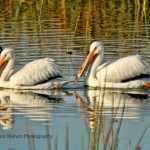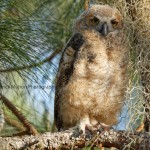 Elizabeth Johnson’s new book, Ask the Beasts: Darwin and the God of Love, is a beautifully written tome. The title is taken from the Book of Job-ask the beasts, they will tell you everything you need to know about God. Johnson examines Darwin’s Origin of the Species in detail. This gave me a whole new perspective on Darwin’s great contribution to the scientific world. I had some new learnings. Darwin’s theory has been and still is being misapplied as social Darwinism—some are less worthy than others. [Unfortunately, our current governmental budgetary practices reflect social Darwinsim in the raw!] Darwin’s theory goes far beyond survival of the fittest. Darwin brings out the communitarian, integrated aspect of natural selection. Darwin’s main focus was to show that creation was ongoing and plastic as opposed to a series of divine interventions from on high. Johnson summarizes the flux of evolving life as “extraordinary fecundity and perpetual perishing.” (212) Here I am reminded of Merton’s wonderful opening in his poem “Hagia Sophia”:
Elizabeth Johnson’s new book, Ask the Beasts: Darwin and the God of Love, is a beautifully written tome. The title is taken from the Book of Job-ask the beasts, they will tell you everything you need to know about God. Johnson examines Darwin’s Origin of the Species in detail. This gave me a whole new perspective on Darwin’s great contribution to the scientific world. I had some new learnings. Darwin’s theory has been and still is being misapplied as social Darwinism—some are less worthy than others. [Unfortunately, our current governmental budgetary practices reflect social Darwinsim in the raw!] Darwin’s theory goes far beyond survival of the fittest. Darwin brings out the communitarian, integrated aspect of natural selection. Darwin’s main focus was to show that creation was ongoing and plastic as opposed to a series of divine interventions from on high. Johnson summarizes the flux of evolving life as “extraordinary fecundity and perpetual perishing.” (212) Here I am reminded of Merton’s wonderful opening in his poem “Hagia Sophia”:
There is in all visible things an invisible fecundity, a dimmed light, a meek namelessness, a hidden whole- ness. This mysterious Unity and Integrity is Wisdom, the Mother of all, Natura naturans. There is in all things an inexhaustible sweetness and purity, a silence that is a fount of action and joy. It rises up in word- less gentleness and flows out to me from the unseen roots of all created being, welcoming me tenderly, saluting me with indescribable humility. This is at once my own being, my own nature, and the Gift of my Creator’s Thought and Art within me, speaking as Hagia Sophia, speaking as my sister, Wisdom.
I am awakened, I am born again at the voice of this, my Sister, sent to me from the depths of the divine fecundity.
Having examined Darwin’s theory in depth, Johnson delves into a wonderful and enlightening discussion of the God of Love as the sustainer of all creation. God became totally enmeshed in materiality with the incarnation. Jesus was the visible representation of the Loving God who sustains all life. As Dante once said, God is the “Love that moves the sun and other stars.” Citing the Christic paradigm, Johnson describes God as “the liberating, healing, and inclusive love that is the meaning of it all.” (201) This certainly reflects Chardin’s view of creation groaning toward the Omega Point—Christ fully risen.
Christ suffered and God knows suffering:
Having tasted the dregs of rejection and physical agony, the crucified Christ knows what it means to suffer. In his own body , he knows. Since he is Wisdom incarnate, this knowing is embedded in the very heart of the living God. As Creator of the world and liberating Redeemer of Israel, the biblical God has always had compassionate knowledge of creation’s suffering. This becomes clear early on in the Bible when at the burning bush Moses hears the voice of YHWH, focused on the Israelites enslaved in Egypt, saying , “I know what they are suffering” (Exod . 3.7). The verb “know” here refers to an experiential kind of knowing, being the same Hebrew verb used to describe sexual intercourse in Genesis: “the man knew his wife Eve, and she conceived” (Gen. 4.1). God knows what creatures are suffering; such knowing is continuously part of the Spirit’s indwelling relationship to the world. What is new in view of the cross is divine participation in pain and death from within the world of the flesh. Now the incarnate God knows through personal experience, so to speak. Johnson, Elizabeth A. (2014-01-16). Ask the Beasts: Darwin and the God of Love (p. 202-203). Bloomsbury Publishing. Kindle Edition.
Jesus was the face of the living God. Incarnation is what allows theology to meld with science. It is God Love that sustains all life and moves it toward completion. Suffering and death is very much a part of life evolving. Johnson writes, “The world develops in an economy of divine superabundance, gifted with its own freedom in and through which the Creator Sprit’s gracious purpose is accomplished.” (179)
Photography has become my contemplation because it connects me with the wonders of creation. What a joy it was to document the growth of the two owlets in the nearby dead palm. They have gone now and I miss them. Hoping they might have returned, I often look up at the tree when I pass. Having photographed numerous white pelicans at the Viera Wetlands, I was astounded to learn that white pelicans hatch two eggs days apart. The firstborn is allowed full sway of the nest to the point of ejecting the second born. Unless the firstborn succumbs, the second born is fated to death by neglect and starvation. How cruel and yet this process ensures in some way the survival of this species. To me this is a vivid reminded that suffering and death is very much a part of the on-flowing life community.
Johnson reminds us that we are part of the web of life and that we bear responsibility to all others—human and non-human. We do not so much stand in dominion over as we stand enmeshed in the ebb and flow of the cosmos. We must honor the created world and preserve it for future generations. Johnson begins this section with words from Pope Francis’ inaugural Mass on March 19, 2013:
Protect creation … protect all creation, the beauty of the created world … respect each of God’s creatures and respect the environment in which we live … care for creation and for our brothers and sisters … protect the whole of creation, protect each person, especially the poorest … Let us protect with love all that God has given us! Johnson, Elizabeth A. (2014-01-16). Ask the Beasts: Darwin and the God of Love (p. 260). Bloomsbury Publishing. Kindle Edition.
Praise God from whom all creation flows. Praise God

